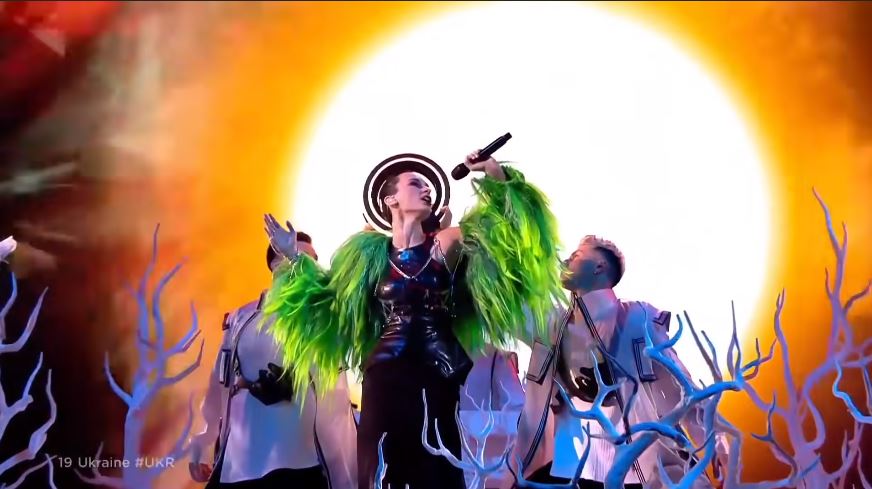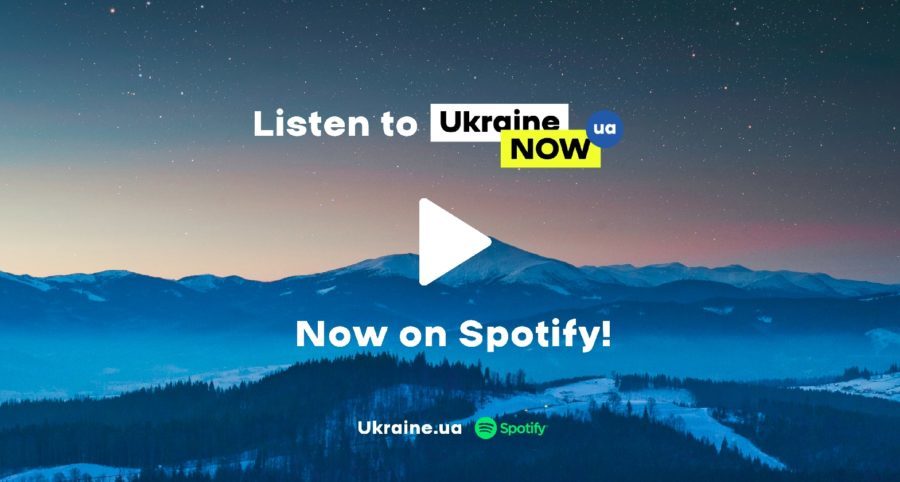Shum's powerful vibes captured folks who don't know a word in Ukrainian and Ukrainians who have never heard folklore alike. That's because, apart from Go_A's talent, the song tapped into millennia of prehistoric pan-European beliefs, most of which are forgotten but are still practiced in remote Ukrainian villages. There, ancient rituals escaped extinction and were passed on by word of mouth through the centuries, until they landed on the stage of Eurovision, sung in the traditional "white voice" manner by Go_A's soloist Kateryna Pavlenko.
The sacral solar cycle
Back in prehistoric times, the lives of humans revolved around the sun. Each year, in an act of magical awakening, the sun rose up from its winter grave and summoned to life the seeds of the earth. The harvest would come; the human race would live another year, young men would form pairs with young women like all other creatures of nature. The human tribe would proliferate, and the cosmic spiral of life would make another turn, as eternal as the whorls of the Milky Way.
Imagine what would happen if the sun were not to wake up! Although such a turn of events would be deadly to human civilization, people in industrialized societies would hardly even notice it from behind their screens. Not so with the humans of the past, who were much more in touch with the planet they are living on.
Solstices and equinoxes were sacral; on these days, the boundaries between this world and the spiritual world grew thin, and anything could happen. Man's acute awareness of the solar body upon which his life was contingent is the reason why the (arguably) greatest Christian holiday, Christmas, is celebrated at the time of the winter solstice, and Midsummer's eve is a pan-European phenomenon.
The awakening of nature with the spring equinox had a special place in this ancient solar calendar. According to researcher Oleh Smoliak, our ancestors celebrated the victory of light over darkness, warmth over coldness, and spring rejuvenation over winter decay. These celebrations were filled with rituals based on magical songs-formulas.
Today, we know of them because they were preserved by Ukraine's most archaic strata of folklore -- the spring songs of vesnianky and haivky, which are the inspiration for Go_A's Shum. Testifying to this primeval nature of "Shum" is its simple and repetitive melody, which revolves around 3-4 notes, and the intense energy that this simple repetitiveness carries.
These songs, which young women sang to dances, greeted and praised the spring and the gifts it brought, celebrated the beauty of spring and young women and men. The dances were as circular and endless as the cosmic trajectory of the sun and the cycle of life on earth. The primal purpose of vesninanky was to awaken the cosmic cycle and noise of the green spring, while haivky were sung later on, when trees had already grown leaves.
HERE ARE SOME HAIVKY PERFORMED IN THE VILLAGE OF PIDVYNNIA:
And so we come to Go_A's opening: bleak figures among bleak nature, with soloist Kateryna Pavlenko standing in a green coat in the center. She is greeting the Spring:
|
Vesnianochka, vesnianochka, |
Oh Spring song, Spring song |
|
De ty zymuvala? |
Where have you spent your Winter? |
|
U sadochku na klenochku |
In the garden, sitting on a maple tree |
|
Sorochechku priala. |
You’ve been spinning a shirt. |
(courtesy of the Eurovision official song translation).

Is Shum a pagan god?
|
Zapletysia, shume, barvinochkom, |
Shum, get twined with periwinkle |
|
Ya tobi spivayu vesnianochku. |
I’m singing the spring song to you. |
Here comes the name of the song -- "Shum." Despite internet commentators alleging this is the name of a Slavic pagan god, research by folklorists doesn't back this version.
First of all, there is very little reliable data on the pre-Christian beliefs of Slavs in the first place: there was no written language before Cyrillic was developed and used by St. Cyril and St. Methodius for evangelization purposes, so information from that time was simply not preserved in writing.
Second, the Slavic pagan gods that we are sure about, like Perun, the god of thunder, left a mark in folklore that is much more pronounced than Shum's. If Shum was indeed a pagan god, we would expect him to have the same characteristics as other pagan gods.
But if Shum is not a pagan god, then who is he? Philologist Lidiya Kozar writes that these spring songs capture the animistic worldview of pre-pagan times, when humans believed that objects, animals, and plants around them had a soul, i.e. anima.
To this day, the word "shum" for "forest" is preserved in some Ukrainian dialects and in Serbian, a language of the related south-Slavic language group. This means it is a haivka,
sung when the forest was already green.
According to Ukrainian historian Stepan Kylymnik, the ancestors of Ukrainians had the animistic view of the forest as a charitable, mysterious, good, or evil being. The haivka "Shum" is therefore a mystery prayer, the researcher notes, which contains "the image of the praise of Shum, the image of his atonement, the image of gratitude, the image of kindness, grace, and love."
The green fur coat
The secret of Kateryna Pavlenko, Ukraine’s enigmatic Eurovision singer
On stage, Kateryna is dressed in a green torn "fur" coat. This is a reference to words from a widespread version of the original haivka that were left out of Go_A's adaptation:
|
A v nashoho Shuma zelenaia shuba |
Our Shum has a green fur coat |
|
Divky hulialy, shubu porvaly |
The girls were jollying around and tore the coat |
"SHUM" EXISTED IN MANY VERSIONS. HERE IS AN AUTHENTIC PERFORMANCE OF ONE OF THEM:
This "fur coat" represents the green tree branches from forests to where the ancestors of Ukrainians came to call for spring and conduct rituals. To this day, Ukrainian traditions prescribe decorating houses with green tree branches, especially on Pentecost day; these tree branches are Shum's "torn fur coat," which was "twined," aka braided during dances and games:
|
Numo, numo zapletemo shuma |
Come on, come on, let’s twine the Shum, |
|
Zapletemo, huliaty pidemo |
Twine the Shum, dance it around. |
The dance moves of the participants of the dancers of traditional haivka dances illustrate these words, recreating the moving branches of the young spring forest, thus awakening the forces of nature, encouraging the unraveling forces of spring, growth of plants, and even pairing of young couples.
See you, see you?

Young men holding shining circles start dancing in circles around Kateryna, who represents Shum in his fur coat. This is a techno adaptation of traditional Ukrainian vesnianka
and haivka dances, which are often danced around a person in the middle.
The circular motions of the dance repeat the journey of the sun on the sky; in fact, they strengthen the sun on its journey and help it bring about the victory of spring over winter. And so it gets more lively on the stage: the sun is awakened, cutting into the winter darkness with its rays of energy.
What about the emblematic refrain -- see you see you see you? Contrary to what many listeners are imagining, Kateryna isn't saying "bye bye," but "siyu siyu," which means "I am sowing" in Ukrainian.
|
Siyu, siyu, siyu, siyu konopelechky |
Sowing, sowing, sowing, sowing hemp plants, |
|
Siyu, siyu, siyu, siyu zelenesenki. |
Sowing, sowing, sowing, sowing green ones. |

Illustrating her words are the musicians symbolically sowing seeds on stage. These words and actions have a magical reason:
"Vesnianky and haivky often contain motives of agrarian magic -- 'sowing sowing hemp plants,' 'sowing poppies,' 'planting a pear tree.' They recreate agricultural rituals, where something is symbolically planted, cultivated, and gathered, because people really believed this will give a good harvest,"
explains Larysa Lukashenka, Associate Professor at the chair of musical folkloristics of the Lviv national music academy.
Awakening

|
Vesnianochko, panianochko |
Oh Spring, our Miss, |
|
Zahlian u vikontse. |
Look in our window. |
|
Zaspivaly spivanochku |
We had sang our song |
|
Zasvitylo sontse. |
And the Sun shined on. |
The musicians on the stage have greeted spring, awakened the sun with songs and circular dances, twined and braided the green branches of the forest, awash in the noise of the wind rustling the leaves of the trees, and planted hemp seeds.
What can possibly follow? Of course, the riot of spring, the great awakening of nature and people. The music grows faster and faster, the dormant white figures are now racing ahead.
The ancient ritual worked. Blood is pumping in our veins, the juices of the earth have been set in motion. We have once again set the circle of life in motion.

You can check out some more interpretations (some of them more substantiated than others) in the video with English subs below:
[youtube https://www.youtube.com/watch?v=r9hT-YoKCvM?cc_load_policy=1&cc_lang_pref=en]
Read also:
- Beyond Go_A: a playlist and guide to modern Ukrainian folk music
- Ukraine’s Go_A makes it to Eurovision grand final with archaic pagan tune to awaken spring
- The secret of Kateryna Pavlenko, Ukraine’s enigmatic Eurovision singer
- How Ukrainian artists broke into the global art scene after the Euromaidan Revolution
- Ukraine’s 30: prominent Ukrainians who changed the country and the world. Part 1: Culture
- The three Ukrainian women breathing new life into ancient musical traditions
- Explosion of new Ukrainian music after introduction of protectionist language quotas
- Kyiv is becoming the world’s music video capital: 12 iconic clips
- Five things to know about the Eurovision song contest in Kyiv
- 8 shades of Jamala, Ukraine’s Eurovision contestant
- Crimea comes to Eurovision
- The Unknown Ukrainian Carol that everyone knows
- Catholic priest reconstructs Ukraine’s prehistoric Christmas traditions
- Celebrating the “Old New Year” with Malanka carnival in Ukraine





